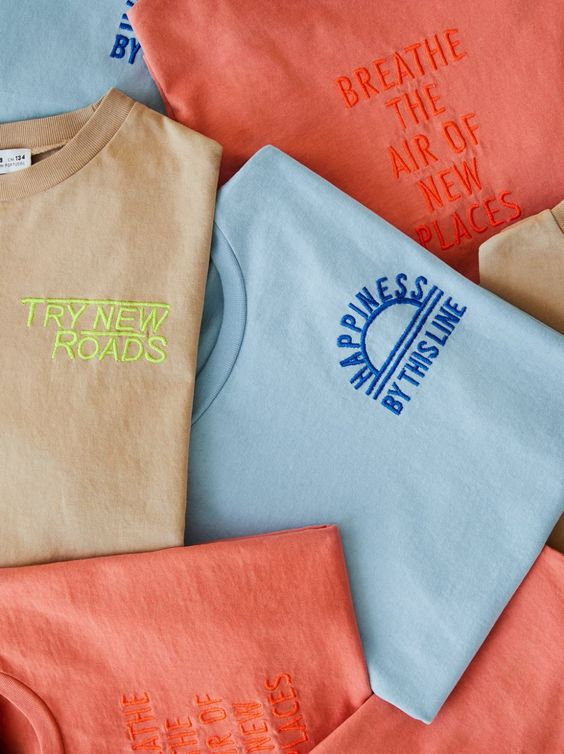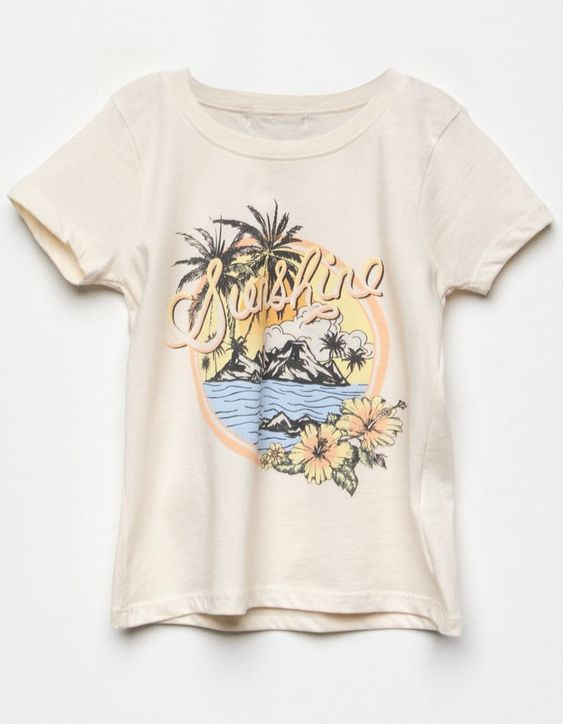The Evolution of T-shirt Fashion in Cultural and National Celebrations Around the World is a fascinating journey that traverses through time, styles, trends, and cultural significances. This ubiquitous garment, once considered a mere undergarment, has transformed into a canvas for self-expression, a means of communication, and a staple of international celebrations. Through this blog post, we will explore the multifaceted evolution of T-shirts, particularly in how they have been integrated into various cultural and national festivities.
The Historical Roots of the T-Shirt
The T-shirt’s origins can be traced back to the late 19th century as an undergarment for men, primarily worn beneath uniforms by sailors and soldiers. However, its journey towards mainstream fashion began in the mid-20th century. Understanding its historical background offers insights into how it evolved into a global fashion statement.
The Birth of the Modern T-Shirt
The modern T-shirt emerged during World War II when U.S. Navy sailors began wearing white cotton undershirts as outerwear. This transition marked a significant turning point in T-shirt fashion, as people started to adopt this simple yet versatile piece of clothing in everyday life.
As soldiers returned home from the war, the T-shirt found its way into civilian wardrobes. Hollywood stars like Marlon Brando and James Dean popularized the look, associating the T-shirt with youthful rebellion, casual coolness, and an accessible style that resonated with the masses.
T-shirts in the Counterculture Movement
By the 1960s, the T-shirt became a symbol of social movements and counterculture. As young people rallied for civil rights, anti-war protests, and environmental issues, they used T-shirts to express their opinions and ideologies.
Graphic designs featuring slogans and images emerged, turning the T-shirt into a powerful medium for political statements and artistic expression. This period marked a significant shift in how T-shirts were perceived, transforming them from mere garments to impactful tools of social commentary.
Commercialization and Branding
The commercialization of the T-shirt took off in the 1970s and 1980s when companies began producing mass quantities of printed shirts. The rise of brands like Levi’s and Hanes demonstrated the growing demand for personalized T-shirts, leading to the development of screen printing technology that allowed for intricate designs.
In parallel, pop culture icons and musicians began sporting custom T-shirts, further cementing their status in both fashion and music scenes. Today, T-shirts are no longer just clothing; they are a canvas for creativity, identity, and advertising.
T-Shirts in Cultural Celebrations
Cultural celebrations around the world have embraced T-shirts as a means of showcasing heritage, pride, and unity. From colorful festivals to solemn commemorations, T-shirts have become integral to cultural identity and expression.
Festivals and Parades
Many cultures celebrate annual festivals where T-shirts play a critical role in expressing collective identity. In events like Carnaval in Brazil or Mardi Gras in New Orleans, vibrant T-shirts adorned with unique designs become a uniform for participants, helping to foster a sense of belonging and solidarity.
The artwork on these T-shirts often reflects local traditions, colors, and motifs. For instance, T-shirts worn during the Holi festival in India are typically bright and colorful, symbolizing the abundance of spring and the victory of good over evil.
Participants often wear these T-shirts to promote unity while encouraging tourism and community engagement. The designs also serve as a reminder of the cultural significance of the festival, as creators weave narratives into each fabric.
Commemorative Events
T-shirts often represent remembrance and honor at national commemorative events. Memorial Day in the United States, Armistice Day in the UK, and similar occasions worldwide see individuals wearing T-shirts that pay tribute to those who have sacrificed their lives in service to their country.
These shirts frequently feature poignant messages, symbols, and imagery that contribute to collective mourning and reflection. Wearing such T-shirts fosters solidarity among participants, encouraging conversations about history and honoring shared experiences.
Moreover, non-profit organizations often leverage T-shirts for fundraising, utilizing them as visual reminders of causes that resonate deeply within communities. The T-shirt becomes a beacon of support and awareness, further embedding itself in the cultural landscape of commemorative celebrations.
National Holidays and Pride
National holidays are another context where T-shirt fashion thrives. Countries around the globe celebrate their independence, unification, or significant historical milestones with pride, often expressed through patriotic T-shirts emblazoned with national flags, symbols, or slogans.
For example, during Independence Day in the United States, T-shirts adorned with red, white, and blue patterns dominate the streets, allowing individuals to showcase their national pride. In addition, events like Bastille Day in France and Canada Day highlight how T-shirts can encapsulate national narratives and histories.
Personal insights reveal that the act of wearing a patriotic T-shirt during these celebrations promotes a sense of belonging and attachment to one’s roots, transcending linguistic and cultural barriers. The T-shirt becomes a universal language, conveying pride and unity amongst diverse populations.
The Global Influence of T-Shirt Fashion
As globalization continues to shape our interconnected world, T-shirt fashion adapts to reflect cultural shifts, technological advancements, and new design philosophies. The democratization of fashion allows people from different backgrounds to interpret and incorporate T-shirts into their cultural narratives.
Trends Influenced by Technology
The advent of digital printing technology has revolutionized T-shirt design and production, making it easier for individuals to create custom designs that reflect personal beliefs, interests, and cultural influences. Online platforms allow artists and designers from various backgrounds to share their work globally, giving rise to unique and culturally rich T-shirt designs.
This trend is evident during cultural celebrations, where participants often wear T-shirts that reflect contemporary art styles influenced by local artists. Technological innovations facilitate a more inclusive approach to fashion, enabling diverse voices and stories to emerge through the humble T-shirt.
Social Media and Cultural Exchange
Social media plays a pivotal role in shaping T-shirt fashion. Platforms like Instagram and TikTok have become virtual stages for showcasing T-shirt designs and promoting cultural celebrations. Influencers and celebrities often don T-shirts from various corners of the world, which can spark interest and appreciation for different cultures.
Through social media campaigns, brands can engage with consumers on a deeper level, offering limited-edition T-shirts designed for specific events. This marketing strategy creates buzz around cultural celebrations while amplifying various cultural narratives, paving the way for authentic exchanges.
Additionally, user-generated content allows individuals to share their experiences while celebrating their culture, creating a sense of community beyond geographical boundaries. This virtual space enhances the visibility of diverse cultural practices, providing a platform for dialogue and interaction.
Sustainable Fashion and Ethical Considerations
In recent years, there has been a growing movement towards sustainable fashion, and T-shirts are not exempt from this trend. As awareness around environmental concerns rises, many brands are adopting eco-friendly practices in T-shirt production, emphasizing ethical sourcing and sustainable materials.
Cultural celebrations provide an opportunity for local artisans and designers to promote their eco-conscious T-shirts, often rooted in traditional craft techniques that celebrate their heritage. By preserving these artisanal methods, communities can sustain their cultural identity while contributing to the global movement for sustainability.
The T-shirt serves as a vessel for meaningful storytelling; each design echoes the values and traditions of the community it represents. This intersection of culture and sustainability highlights how T-shirts can evolve into more than just fashion items, becoming symbols of resistance and advocacy in the face of rapid change.
Personal Reflections on T-Shirt Culture
The proliferation of T-shirts in cultural and national celebrations presents a unique lens through which we can analyze broader societal changes. My personal reflections on T-shirt culture reveal a tapestry woven with stories, identities, and expressions that transcend borders.
Self-Expression Through Fashion
T-shirts offer individuals a chance to express themselves authentically. Whether someone chooses to wear a T-shirt featuring a local artist’s design or a witty slogan, it reflects personal beliefs and experiences. During cultural celebrations, I have observed how T-shirts can serve as conversation starters—bridging gaps between strangers and fostering connections based on shared interests.
This phenomenon is particularly evident at music festivals, where attendees often wear T-shirts representing their favorite bands or artists. It creates a sense of camaraderie, reminding us that fashion can unite us through shared passions and love for culture.
The Role of Memory and Nostalgia
Having worn T-shirts that commemorate events or festivals, I appreciate their ability to evoke memories long after the celebration has ended. A T-shirt from a concert I attended or a cultural festival I participated in brings back vivid recollections of shared experiences, laughter, and joy.
Nostalgia intertwines with cultural identity, reminding us of our roots and the significance behind the visuals on our T-shirts. This emotional connection transforms the garment into more than just a piece of clothing; it becomes a cherished artifact of our life stories.
The Future of T-Shirt Fashion
Looking ahead, the future of T-shirt fashion in cultural and national celebrations seems promising and continually evolving. As society grapples with pressing global challenges, the T-shirt remains poised to adapt, reflect, and inspire change.
Emerging designers from diverse backgrounds will likely continue to reinterpret T-shirts through innovative design, cultural narratives, and social commentary. Collaborations between artists, activists, and communities can amplify voices that deserve recognition while fostering an inclusive environment for creative expression.
Moreover, as discussions around sustainability persist, the T-shirt’s role in promoting ethical fashion will only grow. The potential for T-shirts to be vehicles of change, advocacy, and empowerment is vast, ensuring that they remain relevant in our ever-evolving cultural landscape.
Conclusion
The Evolution of T-shirt Fashion in Cultural and National Celebrations Around the World is a testament to the enduring power of this seemingly simple garment. From its humble beginnings as an undergarment to its current status as a cultural icon, the T-shirt embodies the spirit of individuality, self-expression, and community.
As we navigate through historical contexts, cultural celebrations, and the influences of technology and sustainability, we discover that T-shirts are more than just pieces of fabric—they are powerful instruments of identity, memory, and resilience. The journey of T-shirt fashion continues to unfold, interweaving personal stories and cultural narratives that enrich our understanding of ourselves and each other.


